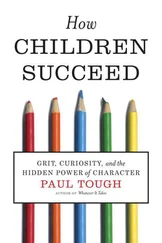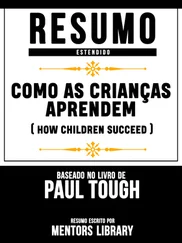If you choose to incorporate, you can be either an S Corporation, a C Corporation or a Limited Liability Corporation (LLC). It’s best to talk to an accountant about which structure would be best for you. Working as a corporation may allow you to (legally) pay less money in taxes by taking some of your income as wages (which are subject to self-employment tax) and some as corporate profit (which is not subject to self-employment tax). However, corporations generally require more paperwork in the form of quarterly payroll taxes and/or a separate end of year tax return for the corporation.
1.9 Your first year as a freelancer
For the first six months to a year after you start your freelance business, expect to spend most of your time marketing and networking rather than translating. If you work in a high-demand language pair or specialization you may have a high volume of work sooner than this. One of the biggest mistakes that beginning freelancers make is to expect too much return from too little marketing effort. You may get really lucky, or you may have just the skills that clients are looking for, or you may want to work with very large agencies that give you high volumes of work, in which case you may be working full-time in a short amount of time. However, most translators will take the better part of a year to move past the initial startup phase. When I launched my freelance business in 2002, I sent out over 400 resumes in the first year, and it still took about 18 months until I was earning a full-time income.
To start out as a freelancer, you will need a functional office setup, a translation-targeted resume and cover letter, translation-specific business cards and possibly a basic professional website. Also, if you join some translation-related professional associations, you will probably get a listing on their website where you can describe your services.
If you are starting your business from scratch, the easiest and fastest way to find work is probably to start applying to translation agencies that you find in the directory of the American Translators Association or a similar entity. Go to the agencies’ websites and then follow the application procedures listed there (usually under the Employment, Freelancers or Contact tab). If you have strong qualifications and well-written application materials and you apply to 10-20 agencies per week, you will start to get some work. If you would like to start out working with direct clients, follow a similar procedure. Research businesses that seem like they could use your services and contact them by mail, e-mail or phone, whichever method you are most comfortable with. Again, if you set high but achievable goals for the number of potential clients you will contact, you will find work.
2 Myths and truths about freelance translation
Many beginning translators have a lot of questions and misconceptions about the industry. So, let’s look at a few myths and truths about freelance translation.
1. Myth : Anyone who is bilingual can be a translator. Truth : Knowing at least one foreign language is definitely a crucial skill for a translator, but it isn’t enough. Translators have to be excellent writers in their target language and they have to know the specific terminology of the specializations that they translate in. Freelancers also have to be able to juggle multiple clients and deadlines and manage the business aspects of their work.
2. Myth : Translators translate in both “directions” of their language pair. Truth : In the U.S., the market is heavily geared toward translators who translate into their native language only.
3. Myth : Most translators do both translation (written language work) and interpreting (spoken language work). Truth : some freelancers do both translation and interpreting, but most concentrate on one or the other.
4. Myth : Most freelance translators are starving artists. Truth : The average full-time freelancer in the American Translators Association makes a little over $60,000 per year. Six-figure income (or the part-time equivalent) is becoming increasingly common among translators who work with at least some direct clients, or who work fairly long hours.
5. Myth : Human translators will soon be replaced by machine translation and will be obsolete. Truth : Machine translation is becoming more sophisticated all the time, but machine translation and human translators are good at very different tasks. Machine translation is great at “getting the gist” of a document or translating a huge volume of documents when speed is more important than quality. Human translators are crucial to conveying cultural nuances and producing high-quality translations of complex documents.
6. Myth : Translators have to be certified. Truth : If certification is available for your language pair (in the U.S., check the website of the American Translators Association atanet. org), it is definitely a plus if you are certified. Some clients may require certification for certain projects, but there are generally no legal or regulatory obstacles to working as a translator if you are not certified.
7. Myth : If you send out five or 10 resumes, you will probably have enough work to be translating full-time. Truth : For the first six months to a year that you are in business, expect to spend most of your time looking for work.
8. Myth : Most translators can translate 7,000-10,000 words per day. Truth : Speed and output vary, but most translators can produce 2,000-3,000 finished words per day. Some translators work much more slowly, translating as few as 250 words an hour.
9. Myth : Most translators charge by the hour. Truth : Most translators charge by the word for translation and by the hour for editing and proofreading.
10. Myth : You have to have a degree in translation to work as a translator. Truth : In the U.S., there are so few university-level programs in translation that most translators do not have a degree in translation. However, it’s definitely an asset if you do have a translation-specific undergraduate or graduate degree.
11. Myth : Translators do not need to have good computer skills. Truth : Translators do nearly all of their work on the computer. In order to be successful as a freelance translator, it really helps to be a fast typist and to be comfortable using office software and possibly a translation memory tool.
12. Myth : Most freelance translators work in a large number of language pairs. Truth : In the U.S., most translators work in one or two language pairs. Outside of the U.S. where foreign languages are more widely taught in school, translators sometimes work in more language pairs.
13. Myth : The source (original) and target (translated) documents normally have the same word count. Truth : Different languages have radically different word counts. For example, most Romance languages use about 30% more words than English for the same text. For this reason, always establish whether you are charging your client for the source or target word count.
14. Myth : There is no way to find out if a translation agency is reliable to work with. Truth : There are several online rating services where you can read what other translators have to say about an agency. Among them are Payment Practices paymentpractices.net or the ProZ Blue Board proz.com.
15. Myth : Freelancers’ clients deduct taxes from what the freelancer earns. Truth : As a freelancer, you are responsible for paying all of your own taxes unless a client hires you as an employee. If the client pays you more than $600 in a calendar year, they must send you an IRS form 1099-MISC stating the total amount that they paid you.
Читать дальше
![Коринн МакКей How to Succeed as a Freelance Translator [calibre 3.46.0] обложка книги](/books/402693/korinn-makkej-how-to-succeed-as-a-freelance-transl-cover.webp)


![Джон Ирвинг - Našlė vieneriems metams [calibre]](/books/384320/dzhon-irving-naŠle-vieneriems-metams-calibre-thumb.webp)
![Джонатан Димблби - Barbarossa - How Hitler Lost the War [calibre]](/books/385421/dzhonatan-dimblbi-barbarossa-how-hitler-lost-the-w-thumb.webp)







